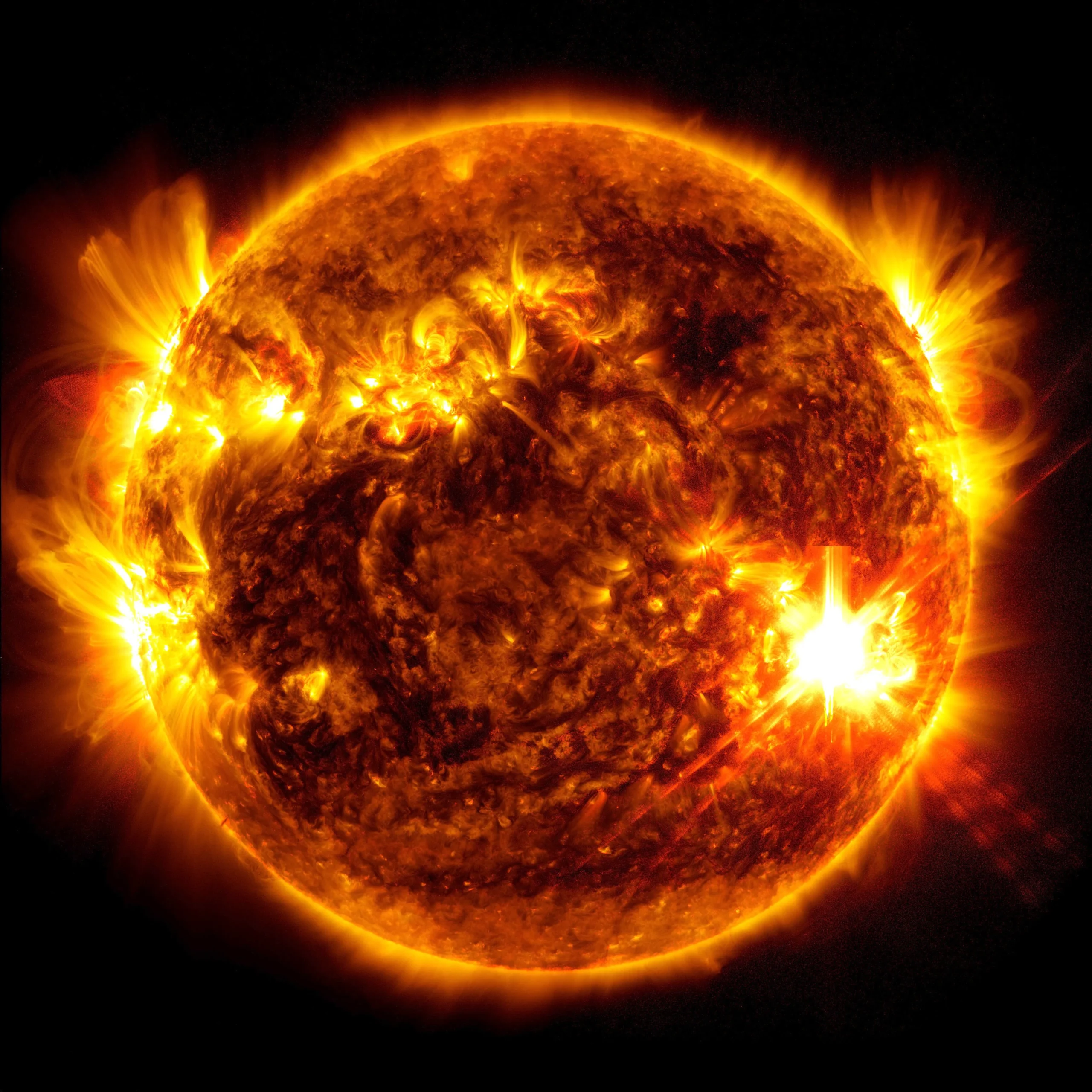Our home, Earth, orbits around the Sun. And so does the whole solar system.

Table of Contents
Remarkable data about the Sun:
| Radius | 696,000 km |
| Mass | 1.989 × 10^30 kg |
| Gravity | 274 m/s² |
| Distance from Earth | 149.6 million km |
| Age | 4.603 billion years |
| Galactic period | 225 million years |
| Planets | Mercury, Venus, Earth, Mars, Jupiter, Saturn, Uranus and Neptune. |
Key Features of the Sun:
- Surface temperature: the temperature of the Sun is around 5,500°C
- Core: The innermost layer where nuclear fusion occurs, converting hydrogen into helium and releasing enormous energy.
- Luminosity: The total amount of energy emitted by the Sun per second is approximately 3.828 × 10^26 watts.
- Solar Magnetic Field: The Sun has a complex magnetic field that changes over time, flipping polarity approximately every 11 years, driving the solar cycle.
- Heliosphere: The region of space dominated by the Sun’s magnetic field, extending far beyond Pluto’s orbit and influencing the entire solar system.
- Life Support: The Sun provides the necessary light and heat to sustain life on Earth through photosynthesis and maintaining the planet’s climate.
Sun Position in the Universe:
- The Sun is located in the center of the solar system, it is the objects that all the solar system orbit around, including us.
- The Sun is located in the Orion Arm, which is a relatively minor spiral arm of the Milky Way. This arm is situated between two larger arms: the Sagittarius Arm and the Perseus Arm.
- The Sun is about 27,000 light-years from the Galactic Center. The Galactic Center is in the direction of the Sagittarius constellation and contains a supermassive black hole called Sagittarius A*.
